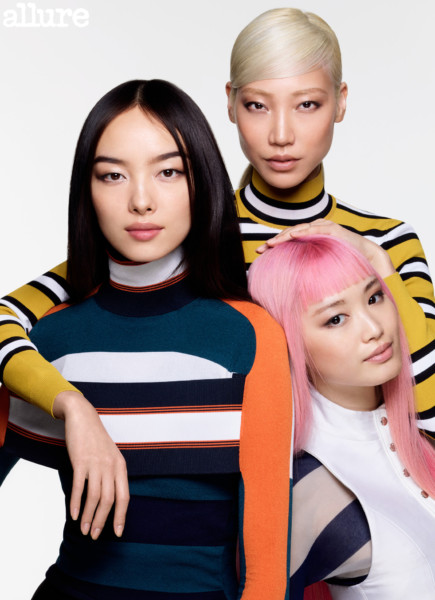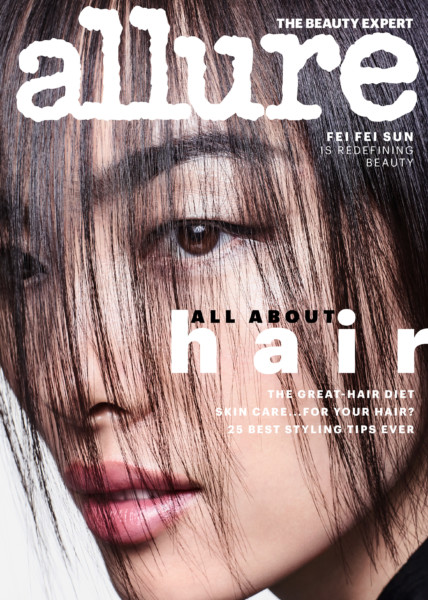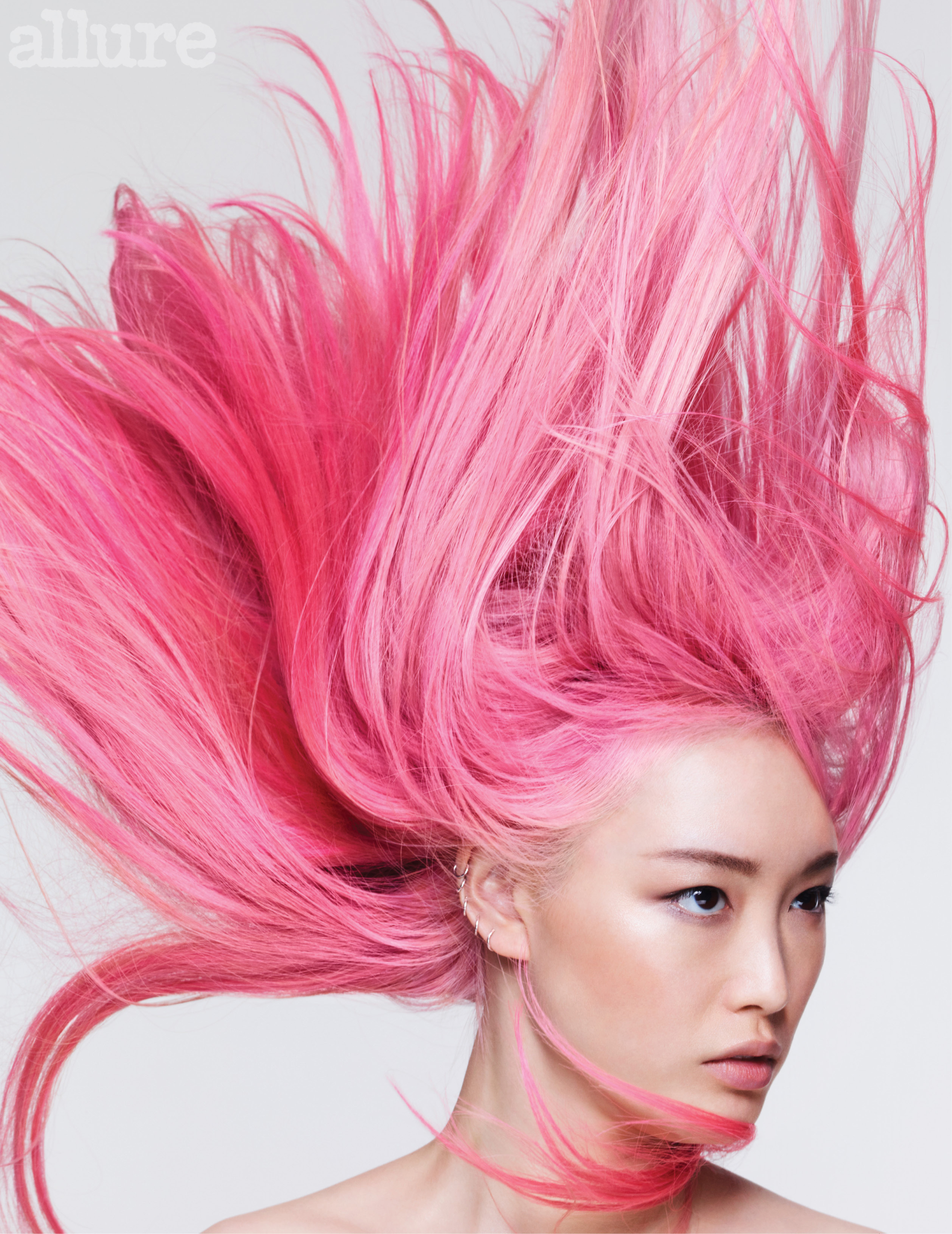Women of color, even actresses and models, remain dramatically underrepresented on magazine covers in the United States. So it might not seem surprising that among Allure’s 327 print issues since it began in 1991, there have only been two featuring Asian women picked for the beauty magazine’s spotlight. This year, Editor in Chief Michelle Lee decided that needed to change.
Allure’s June 2018 issue prominently features three Asian models: Fei Fei Sun, Fernanda Ly, and Soo Joo Park. In a heartfelt editor’s note, Lee, who has been the title’s top editor for more than two years, explains how her work increasing diversity at the magazine and in her public speaking revealed a new insight about inclusivity: “I’ve come to see representation as something even deeper now. We showcase and celebrate different versions of beauty so we can—finally, wonderfully—see one another.”
Allure has done of a lot of work focused on diversity and won praise for its efforts. But in my conversation with Lee, it was clear this project was also deeply personal. This interview has been edited for length and clarity.
ICYMI:Backlash after Facebook says it plans to lump news stories in with political ads
When did this first interest you to the point where you thought “I should really look into how many times [an Asian woman] has been on a cover for the US edition?”
Within the past six months we started really planning this issue out. We were kind of tossing around certain names of celebrities, models, and then our bookings director had this idea—why don’t we get [Sun, Ly and Park]? He said ‘Then we have platinum blonde, black and pink hair.’ I loved it instantly because I thought visually it’s going to be really stunning. I love all those models. Soon after that I was like ‘I wonder when the last time was that we had an Asian woman on the cover?’
I didn’t even look into it right away. Maybe within a couple of weeks after that, I actually Googled [it] to find out. I had found the Lucy Liu cover back in 2000, and then I asked our research department for help and then they found Olivia Munn in 2014. We did an exhaustive search after that, just to make sure that we were right. And it was sad. I think I just kept holding out hope that maybe we would find some more.
I’ve been at Allure for about two and a half years now. In general, we really like diversity and having diverse covers. It’s something that’s so important to me. And if you look back at the past year, year and a half, we had some of the most diverse covers of any magazine in the country. The fact that [the June issue] started out as just, “I love this cover, I think it’s going to be beautiful, I love those models” and we ended up having this different context to it. I thought it was really interesting and that this cover, in particular, was really important.
When I look at how people of color are treated in typical magazines—if you look at either ads or editorial—I feel like there’s always the token person. To me, having three Asian women on the cover just seemed so much fresher and so much more modern. In hindsight, after it had closed, I really do see it as sticking our stake in the ground and being like, “Tokenism is a thing of the past.” The more modern way for us to feature diversity is that you can’t just have like the one token person of color thrown into the mix.

Top models Fei Fei Sun, Soo Joo Park and Fernanda Ly pose together for Allure’s June 2018 edition. Photo Credit: Sølve Sundsbø for Allure
In your experience of being in the industry and now in the top position at a magazine, what are some of the reasons for tokenism? Why were Asian women on covers so rarely?
I think part of it is that looking at all of media and entertainment and popular culture in the past 20 years I’ve been in the business, there weren’t a lot of prominent, like, “famous Asian people.”
When I think about in my formative years, it was Connie Chung on TV. I don’t know if you remember the Pearl Cream lady from the 80s infomercials. There weren’t as many prominent Asians. If you were an editor-in-chief, you didn’t have a lot of people to choose from. There was not very much diversity within modeling; definitely not a lot of diversity within Hollywood.
We have also broadened the idea of who a cover star is. To me, I love the idea of going with a strong concept rather than always doing a Hollywood star because she happens to have a movie out that month.
How much did things like international beauty trends factor into the decision? One of the models is a global spokesmodel for Estée Lauder, which is a major brand, but it feels things have changed in fashion and beauty so much now it’s okay to feature someone who isn’t American or only recently established their career in the US.
Absolutely, I think social media and the Internet in general have really made the world much smaller. Again, it’s redefining what a celebrity is, because nowadays you can be just Instagram-famous and build an entire audience there. I think that beauty in a lot of ways has helped push the boundaries of diversity.
When I think back about the past 20 years of media and magazines in particular, there was a very, very long time there was an very incredibly narrow view of what was ‘beautiful.’ With social media and YouTube, there is so much diversity. You can find any person who looks like you, who you relate to, who you just find really entertaining.
The other big thing is having people of color in decision-making roles. It’s not something that happens overnight. But I do think that naturally then we’ll start to see more diversity in a lot of different ways.

Fei Fei Sun, one of the three Asian top models featured in Allure’s hair issue. Photo Credit: Sølve Sundsbø for Allure
It seemed like for a long time the bar was really high for Asian Americans to get projects greenlighted or approved. What did you point to as proof of support that this would work?
Someone has to be the trailblazer. You have to just go ahead and do it. And sometimes there is no proof for something, but you just know in your editorial gut that it’s the right thing, and it’s something really great for us to do. I look back and remember our September cover of last year when we had Helen Mirren on our cover, who at the time was 72, and we made the statement that we were banning the term anti-aging from our vernacular forever. At that point I talked to a lot of people about “What made you think that you know that this would work? Like how did you know that this would succeed?” We didn’t know. But I knew that it was something that felt right for the brand. I think that in certain cases, the biggest, boldest moves have no prior proof that they’re actually going to work.
As an editor, you just have to believe in what you’re doing and just do it.
I really appreciate that it’s not just a feature inside the magazine. It’s literally a topic that’s on the cover.
The cover really matters. In January, we did a whole issue around eyes and we just had a cover line on there that was “The Monolid Chronicles.” It had nothing to do with the cover image and I remember getting so many messages from women being like “I’m crying right now because I never thought that I would even see the word monolid on the cover of a major mainstream magazine.” We’re certainly not the first people to ever cover anything about monolids.
If you look at YouTube or blogs, there’s so much monolid stuff out there, but also we are a major magazine in this country. That was something that was a real turning point in my mind. But it’s like when you bring something to the cover like Halima [Aden, who appeared in a Nike hijab on the cover of the magazine]—if it had just been an inside story, it obviously would have been beautiful and still impactful. But putting her, and Helen Mirren, on the cover, those are the things that people remember for a long time.
From archives: NYT reporter’s thought about media coverage of mass shootings goes viral
Karen K. Ho is a freelance business, culture and media reporter, based in New York. She is also a former Delacorte Fellow at CJR. Follow her on Twitter @karenkho.

